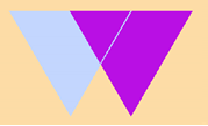Peta Konsep Mahasiswa dalam Penelitian Sastra: Studi Kasus Tahun Kademik 2013 dan 2014
Sari
A preliminary observation on the students’ term papers of the English language education department of Sarjanawiyata Tamansiswa University showed that, in terms of using of concept maps, some were completed with ones and the others were not. Therefore, it was interesting to do a research on this issue. However, due to time limitation, this study focused on the term papers with concept maps and the objective of the research was to find out how students developed their concept maps. The research method was a mixed-method between quantitative and qualitative techniques. The objects of the research were the term papers on literature accomplished during the academic year 2013/2014. The quantitative technique was applied in classifying the objects according to the proportion of interest, while the qualitative technique was used to analyze the findings descriptively. The results of the research showed that 16.39% of 137 students writing term papers during the academic year analyzed literary works 91.30% of which used concept maps. The concept maps could be classified into two groups: comprehensive and partial.
Kata Kunci
Teks Lengkap:
PDFReferensi
Åhlberg, M. (2013). Concept mapping as an empowering method to promote learning, thinking, teaching and research. Journal for Educators, Teachers and Trainers, Vol. 4 (1), pp. 25 – 35.
Beel, J., B. Gipp, and J. Stiller. (2009). Information Retrieval on Mind Maps – What could it be good for? In Proceedings of the 5th International Conference on Collaborative Computing: Networking, Applications and Worksharing, pp. 1–4.
Buzan, T. (1988). Super-creativity: An interactive guidebook. Los Angeles, Ca., USA: Audio Renaissance Tapes, Inc.
Buzan, T. & B. Buzan. (1993). The mind map book: How to use radiant thinking to maximize your untapped brain potential. New York: The Penguin Group.
Kinchin, I.M., D. Streatfield & D.B. Hay. (2010). Using concept mapping to enhance the research interview. International Journal of Qualitative Methods 9(1), pp. 52-68.
Meier, P.S. (2007). Mind mapping: A tool for eliciting and representing knowledge held by diverse informants. Social Research Update, Issue 2, pp. 1-4.
Deshatty, D.D. & V. Mokashi. (2013). Mind maps as a learning tool in anatomy. International Journal of Anatomy and Research, Vol 1(2), pp. 100-03.
Dixon, R.A. (2014). Cognitive mapping techniques: Implications for research in engineering and technology education. Journal of Technology Education Vol. 25 No. 2, pp. 2-17.
Salzberg-Ludwig, K. (2008). Scholarly research on mind maps in learning by mentally retarded children. (A paper presented at the European Conference on Educational Research, University of Goteborg, 10-12 September 2008).
Straubel, L.H. (2006). Creative concept mapping: from reverse engineering to writing inspiration. Concept Maps: Theory, Methodology, Technology Proceeding of the Second International Conference on Concept Mapping. San José, Costa Rica.
Sugiyono. (2015). Metode penelitian kombinasi (Mixed methods). Bandung: Penerbit Alfabeta.
Swan J. (1997). Using cognitive mapping in management research: Decisions about technical innovation. British Journal of Management 8(2), pp. 183-198.
Wheeldon, J. & J. Faubert. (2009). Framing experience: concept maps, mind maps, and data collection in qualitative research. International Journal of Qualitative Research, 8(3), pp. 68-83.
Wheeldon, J. (2011). Is a picture worth a thousand words? Using mind maps to facilitate participant recall in qualitative research. The Qualitative Report Volume 16 Number 2, pp. 509-522.
Zipp, G. & Maher, C. (2013). Prevalence of mind mapping as a teaching and learning strategy in physical therapy curricula. Journal of the Scholarship of Teaching and Learning, Vol. 13, No. 5, pp. 21-32.
DOI: http://dx.doi.org/10.30738/wa.v1i1.1087
Article Metrics
Sari view : 56 timesPDF - 48 times
##submission.copyrightStatement##
##submission.license.cc.by-sa4.footer##

Ciptaan disebarluaskan di bawah Lisensi Creative Commons Atribusi-BerbagiSerupa 4.0 Internasional.

